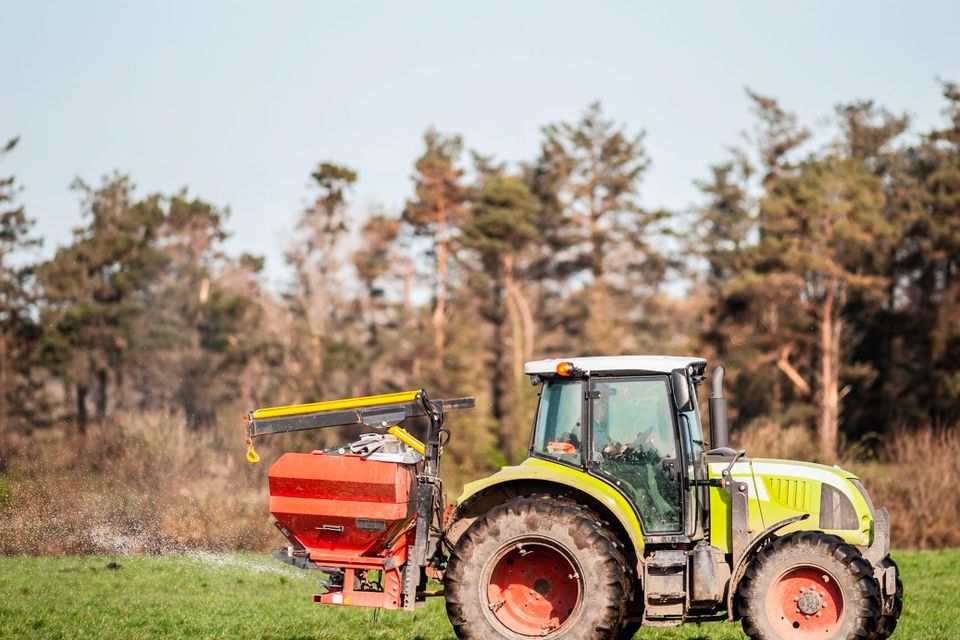All is not well down on the farm and our agri-food sector faces major challenges
The latest Central Statistics Office (CSO) figures show there were 420 crimes a month reported on farms throughout the country in the first six months of 2014
Don't be deceived by the glib handshakes and backslapping from political leaders on their annual gladhanding rural jamboree at Ratheniska. Behind fluttering flags, cooking demos, pink wellies, goodie bags, vintage horse ploughs and celebrity appearances, dark storm clouds gather over Irish agriculture.
The National Ploughing Championships are synonymous with record-breaking success. If you spent a mere two minutes at each stand, it would take you 50 hours to complete the marathon.
It is easily the most successful event of its kind in Europe with 280,000 visitors. The scale of it also sets it apart. It is a testament to Anna May McHugh and her family's lifetime dedication to NPA.
Yet despite all the success, there lurks behind this year's jamboree real fears for family farms' finances. On one level, everything is pretty much hunky dory. Growth aims are of €19bn annual exports, with gross added value of 70pc from a 2012 baseline level of €7bn.
The agri-food industry anticipates a decade of unprecedented investment in new technology innovation. But while all these visions and dreams are easy to narrate, the realities depend on sustained profitability.
The dichotomy between exponential increased output and negative market returns comes sharply into focus in the dairy sector. Milk quotas were abolished on April 1. This was the most radical reversal of common agricultural policy in 30 years.
A new era of unfettered dairy expansion was modelled on New Zealand's milk pool expansion of five to 20 billion litres during our quota regime period since 1984. The underlying presumption was of soaring demand in the diverse markets of Asia, South Africa and the Middle East. China alone was expected to grow by 43pc up to 2019. An extra 10,000 jobs and 300,000 cows were forecast over a decade for our dairy sector.
But reality bites with a vengeance for Ireland's 17,881 milk farmers. Initial optimism has been replaced by desperate head-scratching. Milk prices have plummeted from a high of 43c per litre to just 26c. Teagasc's independent income statistics and forecasts for 2015 predict that average dairy incomes will drop by 40pc to €40,000. Since then, milk prices came back another two cent.
Irish milk production is expected to rise by 10pc, raising average farm output from 67,000 gallons.
Can we just remind ourselves that dairy farmers are the backbone of Irish agriculture? They are the most productive (grassland fertilisers), efficient (optimal genetics), hard-working (seven-day week - morning and evening) and earn higher incomes than dry stock/tillage colleagues.
Gearing up for extra output, they have invested heavily in advanced capacity of dairy parlours and other equipment, more in-calf heifer numbers and extra land.
Average low levels of borrowings of circa €30,000-€80,000 doubled. The sad truth remains that, despite all that, they have seen more money going out for less return.
An income crisis now looms because of the slump in international/EU prices for dairy products. Production levels have significantly increased in Poland, the UK, Denmark, Netherlands and Spain. Overall EU production will be up 1pc in 2015.
Outside the EU, production from both the US and New Zealand is up 3-4pc. At the same time, demand has actually weakened.
Chinese milk powder imports dropped, while the Russian embargo adversely impacts exports. Butter prices are less affected than powders, but most recently Global Dairy Trade auction prices signalled further declines over the coming months.
On top of all this, the expected lower input costs from cheaper energy haven't resulted in cheaper fertilisers and feedstuffs costs remain high. The stark truth is that commodity prices in dairy face further short-term depression.
And the outlook for 2016? No substantial changes to production costs; 10pc increase in output; declined margins per hectare from €1,400 (2014) to below €500. Meanwhile, the EU budget cushion for price adjustments amounts to a mere 3c per litre via direct payments.
Income difficulties won't be offset by other sub-sectors within agriculture. Teagasc forecasts overall farm family incomes for 2015 will be down 15pc. The 2015 grain harvest is unduly prolonged due to late ripening; yields are good, but prices are weaker than expected.
These combined difficulties resulted in farmers on the streets of Dublin and Brussels, protesting to the EU Commission. This resulted in advance payments of 70pc of direct income supports in October.
The plan to expedite cash flow with €500m of EU cheques in the post amounts to a short-term Band-Aid solution. These are profound problems.
Questions are now being asked as to whether the latest revised CAP reform model can endure politically. The policy was to sever links between products and subsidies. Dismantling EU export refunds and supply management mechanisms means accepting world commodity prices.
We will see the true impact of all this at peak milk supply next spring.
Another trend emerges to punish primary producers. Did you notice that while farm-gate milk prices have dropped by up to 17 cent per litre, there isn't a corresponding reduction in your one-litre carton of milk at supermarkets, which remains at €1.15c.
Corporate globalisation has resulted in commercial oligopolies operating on every side of farm enterprises. The scale of purchasing power, through consolidations within grocery, retail and distribution trades means inequitable distribution of profit across the food-supply chain.
This week, the Competition and Consumer Protection Commission announced a sectoral probe of the grocery sector, which should confirm the negotiating vulnerability of farmers.
Irish agriculture faces enormous challenges to improve its cost competitiveness. Structural changes in the models of farm partnerships between parents and the next generation require innovative tax incentives over a decade, facilitating farm transfers.
Access to long-term cheap capital to ride out these storms hasn't been provided through the EIB or state finance channels. Token tours of trade stands can't hide a looming income crisis, it's now time to review CAP transitional market supports, before it's too late.
Join the Irish Independent WhatsApp channel
Stay up to date with all the latest news















